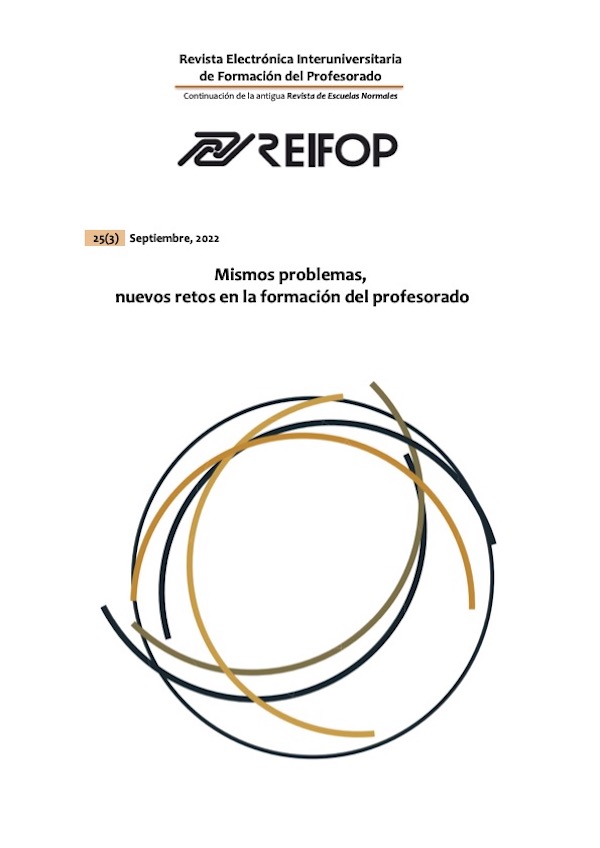Trends in the educational response to students with high intellectual capacity. Regulatory frameworks and actions contemplated in the decade 2009/2010 - 2019/2020
Supporting Agencies
- High intellectual capacity; educational response; legislation; prevalence.
Abstract
This article analyzes the educational response aimed at students identified with high intellectual capacity in the Spanish educational system as a whole, traditionally characterized by the existing unequal regulation, by the disparity of the educational processes aimed at this group and by the relevant discrepancies in the figures of diagnosis. To carry out this analysis, an approximation to the educational praxis of each Autonomous Community is addressed, pointing out, firstly, its national and regional regulatory references and other practical actions promoted and, secondly, prevalence data are offered at the national and regional level contemplating modulating variables such as gender, educational stage and type of center in which these students appear schooled. The comparison is made between two time periods, courses 2009/2010 and 2019/2020, the second corresponding to the last course for which complete data is available on the website of the Ministry of Education and Vocational Training. The results show the progress made in this decade, both in the generalization of specific actions and in the increase in the prevalence of identified cases, although the figures are still low and there is still work to be done to reduce the existing gap in educational care for these students.
Downloads
-
Abstract1500
-
PDF (Español (España))816
References
Arnaiz, P. (2019). La educación inclusiva: mejora escolar y retos para el siglo XXI. Participación Educativa, 6(9), 41–54. https://cutt.ly/kPPDI97
Böker, A. (2021). Mission Accomplished? Critique, Justification, and Efforts to Diversify Gifted Education. Social Inclusion, 9(3), 337–346. https://doi.org/10.17645/si.v9i3.4316
Delgado-Galindo, P., Rodríguez-Santero, J., y Torres-Gordillo, J.J. (2021). Mejora de las prácticas orientadoras desde la revisión sistemática de estudios sobre eficacia escolar. Revista Española de Orientación y Psicopedagogía, 32(3), 93–111. https://doi.org/10.5944/reop.vol.32.num.3.2021.32557
Espada, R.M., Gallego, M., y González-Montesino, R.H. (2019). Diseño Universal del Aprendizaje e inclusión en la Educación Básica. Alteridad, 14(2), 207–218. https://doi.org/10.17163/alt.v14n2.2019.05
Ezzani, M.D., Mun, R.U., y Ellis, L. (2021). District Leaders Focused on Systemic Equity in Identification and Services for Gifted Education: From Policy to Practice. Roeper Review, 43(2), 112–127. https://doi.org/10.1080/02783193.2021.1881853
Flynn, A.S., y Shelton, A.L. (2022) Solving the Right Problem: The Need for Alternative Identification Measures in Gifted Education. Gifted Child Quarterly, 66(2),144–145. https://doi.org/10.1177/00169862211046394
García Barrera, A., Monge López, C., y Gómez Hernández, P. (2021). Percepciones docentes hacia las altas capacidades intelectuales: relaciones con la formación y experiencia previa. Revista Electrónica Interuniversitaria de Formación del Profesorado, 24(1), 239–251. https://doi.org/10.6018/reifop.416191
García-Perales, R., y Almeida, L.S. (2019). Programa de enriquecimiento para alumnado con alta capacidad: Efectos positivos para el currículum. Comunicar, 60, 39–48. https://doi.org/10.3916/C60-2019-04
Gobierno Vasco (2019). Plan de atención educativa para el alumnado con altas capacidades intelectuales 2019-2022. Gobierno Vasco, Departamento de Educación. https://cutt.ly/8D4Hw1U
Ministerio de Educación y Formación Profesional (2020). Ley Orgánica 3/2020, de 29 de diciembre, por la que se modifica la Ley Orgánica 2/2006, de 3 de mayo, de Educación. Boletín Oficial del Estado, 340, 122868–122953. https://www.boe.es/eli/es/lo/2020/12/29/3/dof/spa/pdf
Naciones Unidas (1989). Convención sobre los Derechos del Niño. Naciones Unidas. https://cutt.ly/wD5CH8X
Naciones Unidas (2015). Resolución Adoptada por la Asamblea General el 25 de septiembre de 2015. Transformando Nuestro Mundo: La Agenda 2030 para el Desarrollo Sostenible. Naciones Unidas. https://cutt.ly/gD5XVXc
Pfeiffer, S. (2017). Identificación y evaluación del alumnado con altas capacidades: Una guía práctica. UNIR Editorial.
Reyes-Parra, P. A., Moreno-Castiblanco, A.N., Amaya-Ruiz, A., y Avendaño-Angarita, M.Y. (2020). Educación inclusiva: Una revisión sistemática de investigaciones en estudiantes, docentes, familias e instituciones, y sus implicaciones para la orientación educativa. Revista Española de Orientación y Psicopedagogía, 31(3), 86–108. https://doi.org/10.5944/reop.vol.31.num.3.2020.29263
Santos-Rego, M.A., Lorenzo-Moledo, M., y Priegue-Caamaño, D. (2019). La Mejora de la Participación e Implicación de las Familias en la Escuela: un Programa en Acción. Revista Electrónica Interuniversitaria de Formación del Profesorado, 22(3), 93–107. https://doi.org/10.6018/reifop.389931
Sastre-Riba, S., y Fonseca-Pedrero, E. (2019). Perfeccionismo y alta capacidad intelectual. Medicina, 79, 33–37. https://cutt.ly/tD4UO4s
Syed, J., y Ozbilgin, M. (2015). Managing diversity and inclusion. An international perspective. SAGE.
Torrente, S., Ruiz-Melero, M.J., y Sainz, M. (2022). Motivaciones e intereses en una muestra de estudiantes de altas habilidades con respecto a sus iguales. Revista Española de Orientación y Psicopedagogía, 33(1), 26–43. https://doi.org/10.5944/reop.vol.33.num.1.2022.33754
Los artículos que se publican en esta revista están sujetos a los siguientes términos:
1. El Departamento de Métodos de Investigación y Diagnóstico en Educación de la Universidad de Murcia (España), junto con el Servicio de Publicaciones de la Universitdad de Murcia (Editum) son los editores de la revista REIFOP y conserva los derechos patrimoniales (copyright) de los artículos publicados, permitiendo la reutilización de las mismos bajo la licencia de uso indicada en el punto 2.
2. Las obras se publican en la edición electrónica de la revista bajo una licencia Creative Commons Reconocimiento-NoComercial-SinObraDerivada 3.0 España (texto legal). Se pueden copiar, usar, difundir, transmitir y exponer públicamente, siempre que: i) se cite la autoría y la fuente original de su publicación (revista, editores y URL de la obra); ii) no se usen para fines comerciales; iii) se mencione la existencia y especificaciones de esta licencia de uso.
3. Condiciones de auto-archivo. Se permite y se anima a los autores a difundir electrónicamente las versiones pre-print (versión antes de ser evaluada) y/o post-print (versión evaluada y aceptada para su publicación) de sus obras antes de su publicación, ya que favorece su circulación y difusión más temprana y con ello un posible aumento en su citación y alcance entre la comunidad académica. Color RoMEO: verde.















